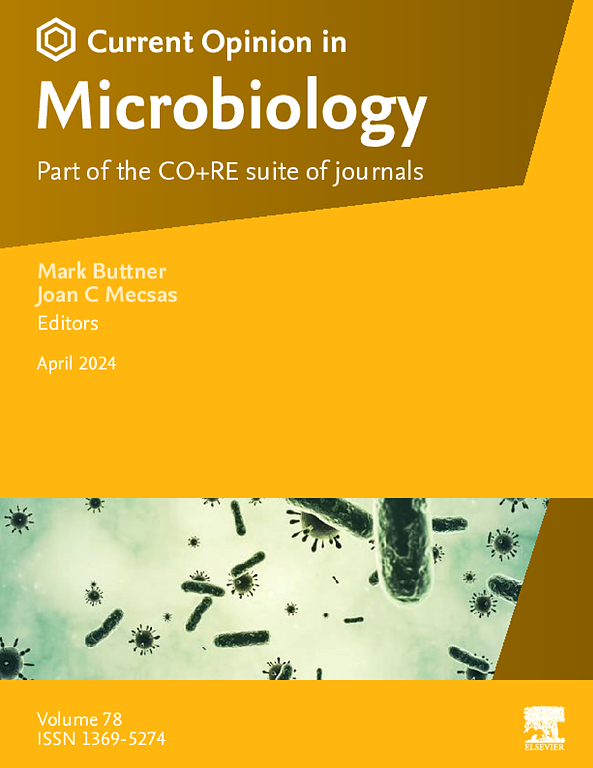游动或无根:c-二- gmp信号与鞭毛运动的相互作用
IF 7.5
2区 生物学
Q1 MICROBIOLOGY
引用次数: 0
摘要
细菌已经进化出多种策略来在不同的环境中茁壮成长。其中包括在运动和静止的生活方式之间快速转换的能力,这两种生活方式都可能取决于环境条件。这些生活方式转变的中心调节器是第二信使环二聚鸟苷单磷酸(c-di-GMP),它通常抑制鞭毛运动并促进无根生物膜群落的形成。反过来,鞭毛细胞抑制c-二gmp的合成或激活其降解以保持运动。c-di-GMP信号传导和运动之间的相互作用发生在多个调节水平上,具有进化保守的一般原理,但具有物种特异性的分子机制,可使环境适应。最近的研究,如本文所述,揭示了c-di-GMP信号和鞭毛运动性之间错综复杂的交叉调节的新复杂性,强调了简单拮抗的上下文特异性差异,并强调了在生活方式转变过程中研究c-di-GMP、基因表达和运动性变化的瞬时动力学的重要性。本文章由计算机程序翻译,如有差异,请以英文原文为准。
Swimming or sessile: the interplay between c-di-GMP signalling and flagellar motility
Bacteria have evolved multiple strategies to thrive in diverse environments. These include the ability to make rapid transitions between motile and sessile lifestyles, either of which might be favoured dependent of the environmental conditions. The central regulator for these lifestyle transitions is the second messenger cyclic dimeric guanosine monophosphate (c-di-GMP), which in general, inhibits flagellar motility and promotes the formation of sessile biofilm communities. Reciprocally, flagellated cells suppress c-di-GMP synthesis or activate its degradation to preserve motility. The interplay between c-di-GMP signalling and motility occurs at multiple levels of regulation, with evolutionarily conserved general principles but species-specific molecular mechanisms enabling environmental adaptations. Recent studies, described in this review, have revealed the emergent complexity of the intricate cross-regulation between c-di-GMP signalling and flagellar motility, highlighting context-specific deviations from simple antagonism and underscoring the importance of studying transient dynamics of c-di-GMP, gene expression, and motility changes during the lifestyle transitions.
求助全文
通过发布文献求助,成功后即可免费获取论文全文。
去求助
来源期刊

Current opinion in microbiology
生物-微生物学
CiteScore
10.00
自引率
0.00%
发文量
114
审稿时长
6-12 weeks
期刊介绍:
Current Opinion in Microbiology is a systematic review journal that aims to provide specialists with a unique and educational platform to keep up-to-date with the expanding volume of information published in the field of microbiology. It consists of 6 issues per year covering the following 11 sections, each of which is reviewed once a year:
Host-microbe interactions: bacteria
Cell regulation
Environmental microbiology
Host-microbe interactions: fungi/parasites/viruses
Antimicrobials
Microbial systems biology
Growth and development: eukaryotes/prokaryotes
 求助内容:
求助内容: 应助结果提醒方式:
应助结果提醒方式:


